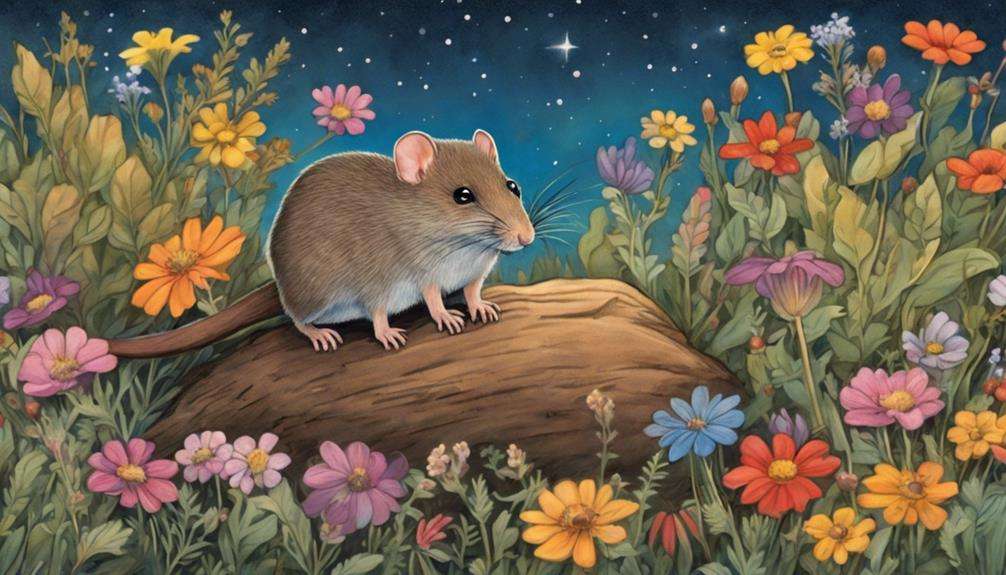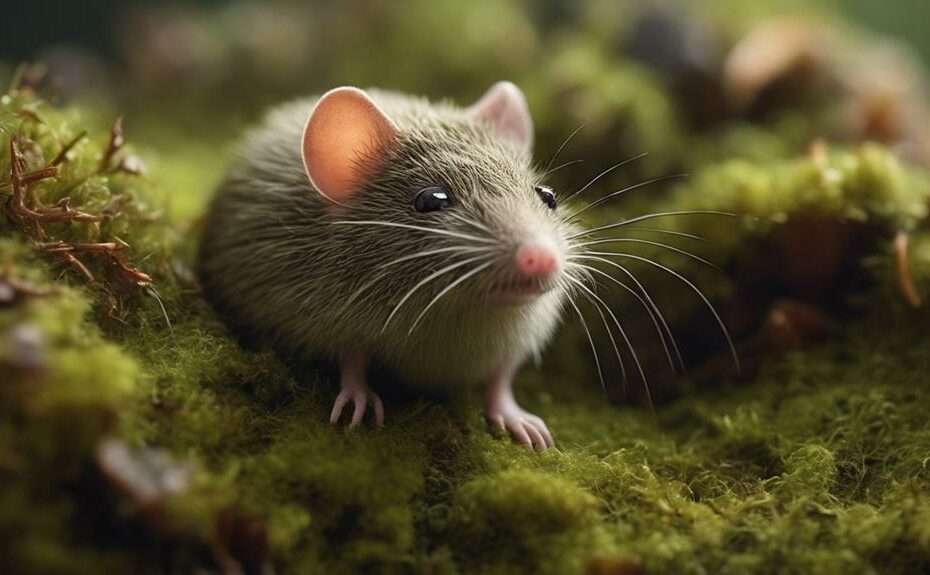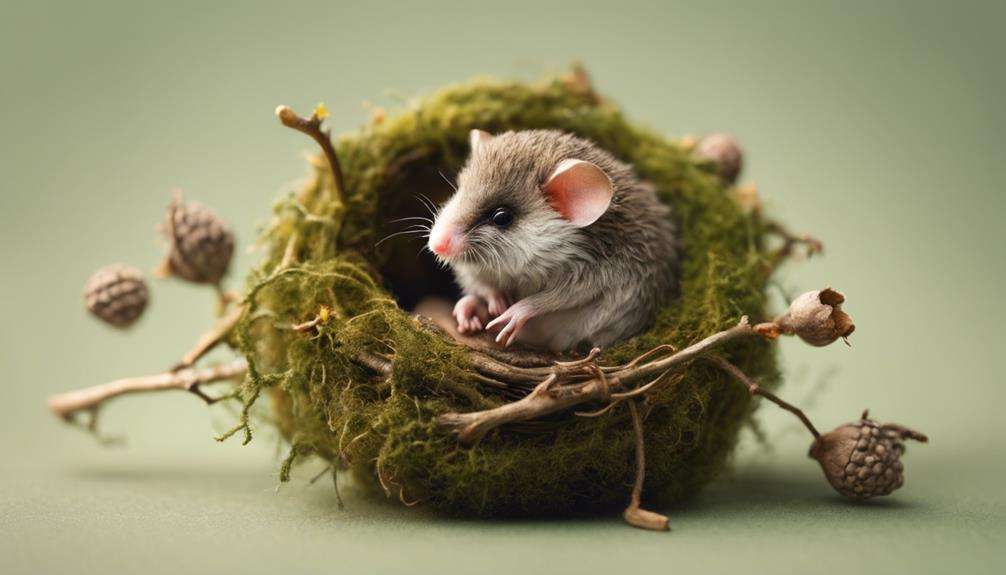You might think you've seen it all when it comes to tiny mammals, but have you ever heard of the Pygmy Possum, American Shrew Mole, and Pygmy Jerboa?
These lesser-known creatures have some fascinating characteristics that set them apart from their more popular counterparts. From unique habitats to specialized adaptations, each of these tiny mammals has a story waiting to be discovered.
So, why not explore the intriguing world of these 3 best lesser-known species and uncover what makes them truly remarkable?
Key Takeaways
- Pygmy Possums showcase agility and adaptability as nocturnal marsupials in Australia, Papua New Guinea, and Indonesia.
- Etruscan Shrew stands out with its rapid heart rate of up to 1,500 beats per minute and exceptional metabolic activity.
- Bumblebee Bat, weighing under 2 grams, impresses as the smallest mammal globally, residing in caves in Thailand and Myanmar.
- American Shrew Moles, at 10 grams, exhibit specialized physical features like sharp nails for efficient burrowing and a flattened snout for foraging.
Unique Tiny Mammal Species
When observing unique tiny mammal species, one can't overlook the remarkable characteristics that set them apart from their larger counterparts in the animal kingdom. These small mammals exhibit fascinating traits that enable them to thrive in their environments.
For instance, the Pygmy Possums, ranging from 2 to 4 inches in length and weighing between 10 to 45 grams, showcase remarkable agility and adaptability as nocturnal marsupials.
The Etruscan Shrew, weighing only two grams, stands out with its rapid heart rate of up to 1,500 beats per minute, demonstrating exceptional metabolic activity to sustain its energetic lifestyle. In contrast, the Bumblebee Bat, weighing under 2 grams, impresses with its diminutive size as the smallest mammal globally, residing in caves in western Thailand and Myanmar.
Additionally, the American Shrew Moles, weighing 10 grams and measuring 2.5 inches in length, exhibit specialized physical features such as sharp nails for efficient burrowing and a flattened snout for effective foraging. These small mammals exemplify the diversity and ingenuity present in the tiny mammal species, showcasing their unique evolutionary adaptations.
Exotic Small Mammal Discoveries
Exotic small mammal discoveries reveal a fascinating domain of biodiversity in the animal kingdom, showcasing remarkable adaptations and unique characteristics that continue to intrigue researchers worldwide.
Among these exotic tiny mammal species are the Pygmy Jerboa, the smallest rodent globally, weighing approximately 3 grams and native to Pakistan and Afghanistan.
The Etruscan Shrew, weighing a mere two grams, boasts a rapid heart rate of up to 1,500 beats per minute and consumes twice its body weight daily.
In contrast, the Bumblebee Bat, the world's tiniest mammal at under 2 grams, resembles a large bumblebee and inhabits caves in western Thailand and Myanmar.
The Pygmy Possum, a marsupial found in Australia, Papua New Guinea, and Indonesia, ranges from 2 to 4 inches in length, weighing between 10 to 45 grams.
Finally, the American Shrew Mole, weighing 10 grams and residing in the moist forests of the northwestern U.S., features sharp nails for burrowing and a flattened snout suited for foraging.
These exotic discoveries highlight the diverse and intriguing world of small mammals.
Uncommon Miniature Mammal Finds

Among the array of diminutive mammalian species, there exist some remarkable finds that aren't widely recognized or studied.
The Pygmy Jerboa, weighing a mere 3 grams, holds the title of the smallest rodent globally, boasting a unique appearance that sets it apart.
Moving on to the American Shrew Mole, at 10 grams, this creature sports sharp nails tailored for burrowing and a flattened snout ideal for foraging in the northwestern regions of the U.S.
We then encounter the Etruscan Shrew, a minuscule marvel weighing only two grams. This shrew's distinguishing feature is its astounding heart rate, which can peak at a remarkable 1,500 beats per minute, while it consumes double its body weight daily.
Shifting to the Bumblebee Bat, a true lightweight champion at under 2 grams, this tiny mammal bears a striking resemblance to a large bumblebee. It makes its home in the caves of western Thailand and Myanmar.
Frequently Asked Questions
What Is the Smallest Known Mammal?
The smallest known mammal is the bumblebee bat, weighing about 2 grams and measuring 1 to 1.3 inches in length. Despite its tiny size, this bat species plays a crucial role in its ecosystem.
What Mammals Was a Very Small Animal?
When exploring very small animals, you'll encounter microscopic marsupials, pocket-sized primates, teeny rodents, miniature carnivores, diminutive insectivores, petite herbivores, tiny arboreal mammals, and lilliputian mammalian marvels, each revealing unique adaptations and behaviors in their tiny world.
What Are Some Other Small Mammals?
When considering small mammals, you may explore a variety of intriguing species like pygmy possums, dwarf shrews, pocket gophers, masked shrews, bumblebee bats, harvest mice, African pygmy mice, and least weasels, each with unique characteristics and habitats.
Which Animal Is Tiny Mammal?
Tiny shrews, microscopic rodents, pocket-sized marsupials, miniature bats, diminutive primates, teeny tiny squirrels, petite hedgehogs, and small-scale weasels all showcase the diversity of miniature mammals. Their size reflects unique adaptations for survival in various ecosystems.
Conclusion
As you conclude your exploration of the world of tiny mammals, remember that these unique creatures are like hidden gems in the vast landscape of the animal kingdom.
Just as a rare diamond sparkles amidst a sea of rocks, these lesser-known species shine brightly with their fascinating adaptations and behaviors.
Keep delving into the wonders of nature, and you may uncover even more miniature marvels waiting to be discovered.






